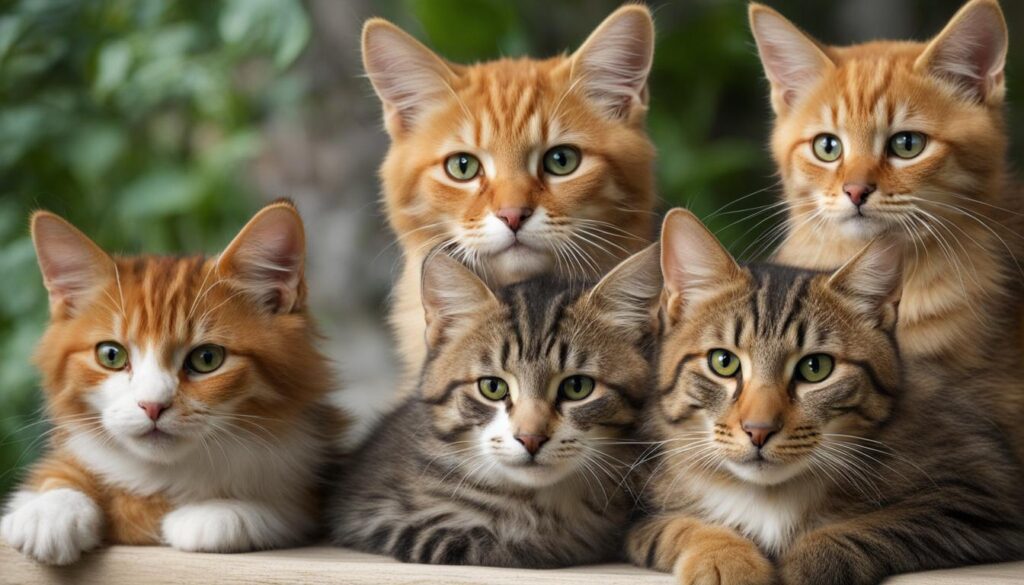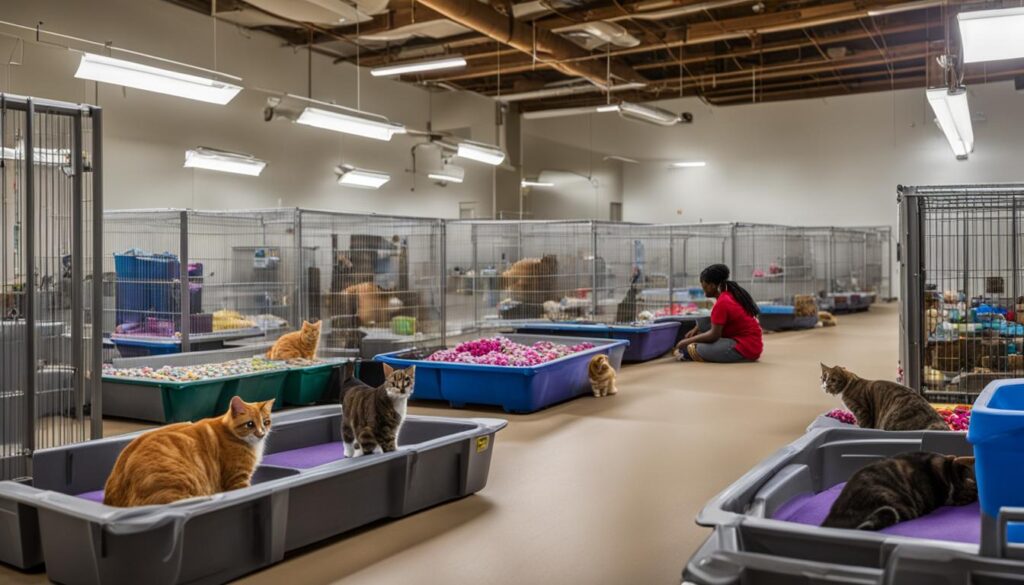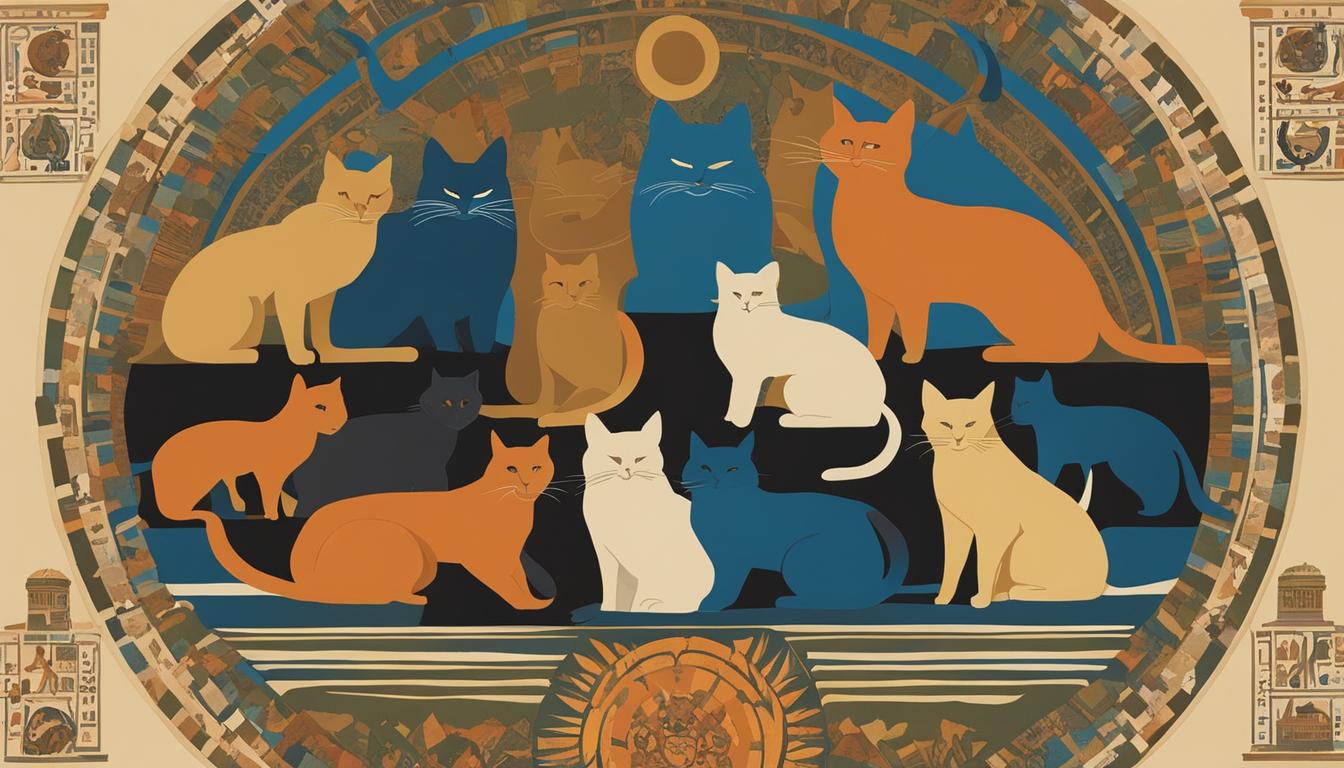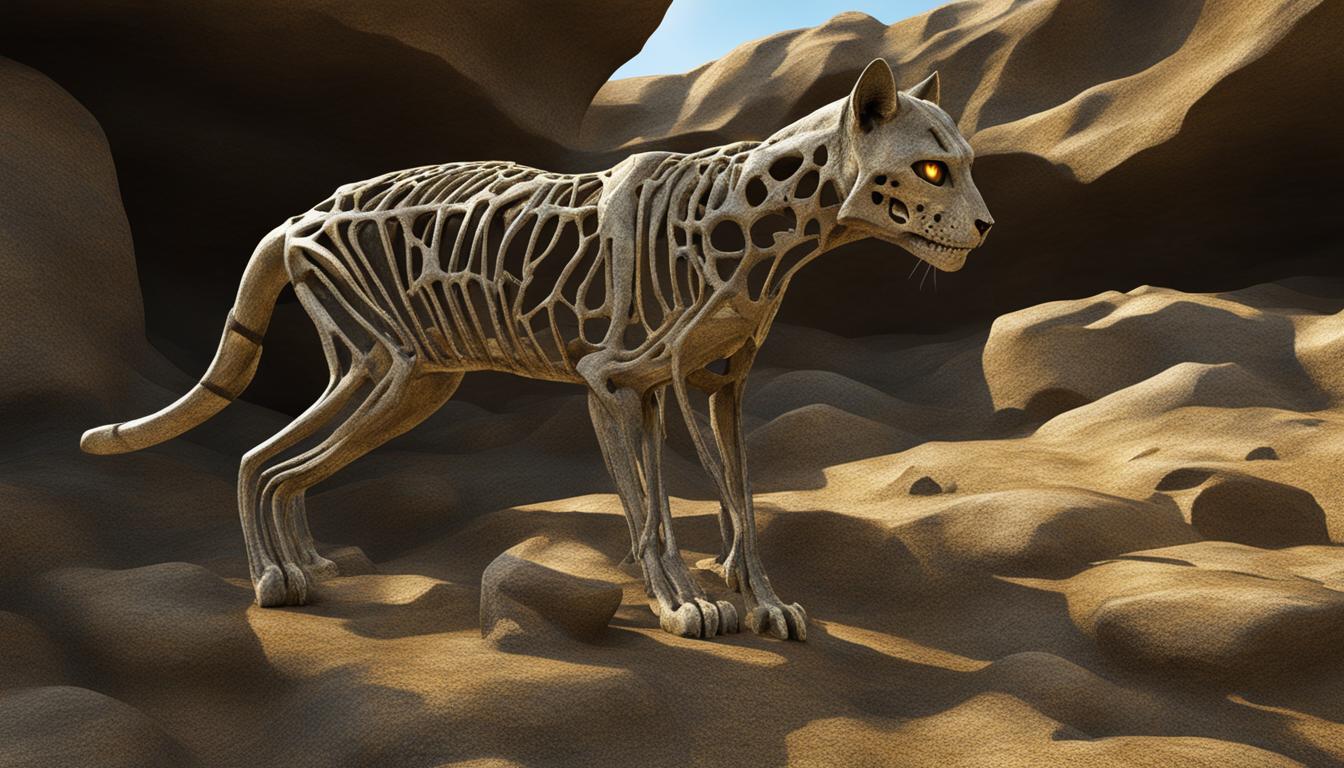As a cat lover and advocate for animal rights, I have always been curious about the evolution of cat protection laws, the history of feline welfare movements, and the development of cat rights. It’s fascinating to explore how our understanding and treatment of cats, and animals in general, have evolved over time.
Key Takeaways:
- The concept of animal rights aims to gain legal and public respect for animals as sentient beings.
- Various approaches, such as grassroots advocacy, legal initiatives, and veganism, have been employed to fight for feline rights.
- The historical foundations of feline rights can be traced back to ancient Eastern religions and influential figures in Western thought.
- Advancements in feline welfare include changes in cat welfare policies, advancements in cat adoption, and improved cat shelter practices.
- Cat advocacy and public awareness have played significant roles in the progression of feline rights.
The Historical Foundations of Feline Rights
The concept of animal rights dates back centuries and has evolved over time. In Eastern religions like Buddhism, Hinduism, and Jainism, the emphasis on non-violence and compassion towards all living beings laid the groundwork for the modern animal rights movement. Western thought also contributed to the development of animal rights, with influential figures like Richard Ryder and Peter Singer bringing attention to the suffering of animals and advocating for their rights.
During the 17th century, the first animal cruelty legislation was passed, marking a turning point in animal welfare. In the 19th century, organizations such as the Royal Society for the Prevention of Cruelty to Animals (RSPCA) were established, further advancing the cause of animal rights. Seminal books like Henry Stephens Salt’s “Animals’ Rights” and Ruth Harrison’s “Animal Machines” shed light on the mistreatment of animals and helped shape the movement.
The historical foundations of feline rights highlight the progress made in raising awareness about animal suffering and building a foundation for future advocacy. These early milestones paved the way for the development of laws and policies aimed at protecting the welfare of cats and other animals.
“The historical foundations of feline rights highlight the progress made in raising awareness about animal suffering and building a foundation for future advocacy.”
| Year | Event |
|---|---|
| 17th century | First animal cruelty legislation passed |
| 19th century | Establishment of organizations like RSPCA |
| 1892 | Publication of “Animals’ Rights” by Henry Stephens Salt |
| 1964 | Publication of “Animal Machines” by Ruth Harrison |
The efforts of activists and organizations throughout history have laid the groundwork for the animal rights movement we see today. By understanding the historical foundations of feline rights, we can better appreciate the progress made and continue to advocate for the well-being and rights of cats and all animals.
The Evolution of Feline Rights Laws and Policies
The rights and welfare of cats have undergone significant changes over the years, reflecting society’s evolving understanding and compassion towards animals. From advancements in feline welfare to the history of cat adoption, this section explores the key developments in cat rights laws and policies.
The Changing Landscape of Cat Welfare Policies
Over the years, there have been numerous advancements in feline welfare that have shaped the legal protections afforded to cats. One notable example is the establishment of national animal protection legislation in countries like Britain, which have set standards for the treatment and care of animals, including cats. These laws have aimed to protect cats from cruelty, neglect, and abuse, ensuring their well-being is prioritized.
Moreover, there has been an increased recognition of the risks and impact of intensive animal agriculture on feline welfare. As people become more aware of the animal cruelty involved in factory farming practices, there has been a push for more humane treatment of animals in research facilities and a growing demand for alternative, cruelty-free options in the food industry.
A History of Cat Adoption
Cat adoption has also played a crucial role in feline welfare. The recognition of cats as companion animals and the rise of animal shelters and rescue organizations have contributed to the improvement of their overall welfare. Cat adoption provides cats with a second chance at life, ensuring they are placed into loving homes where their physical and emotional needs are met.
In recent years, there has been a growing emphasis on responsible pet ownership and the importance of spaying and neutering cats to control the population. This approach aims to reduce the number of stray and feral cats, ultimately improving their overall welfare and reducing the burden on animal shelters.
| Year | Key Milestone |
|---|---|
| 1976 | Animal Welfare Act in the United States |
| 1981 | Pets in Housing Rights in the United States |
| 1991 | Cats Protection established in the UK |
| 1996 | Animal Rights Act in the Netherlands |
In the words of Mahatma Gandhi, “The greatness of a nation can be judged by the way its animals are treated.” As we continue to witness the evolution of feline rights laws and policies, it is crucial to remember the intrinsic value of cats and their right to be treated with kindness, compassion, and respect.
Looking ahead, it is essential to build on these advancements and advocate for stronger laws that protect cats from cruelty and ensure their overall well-being. By championing feline rights and raising public awareness, we can strive towards a society that values and respects all sentient beings, including our beloved feline companions.

Cat Advocacy and Public Awareness
The progression of feline rights and welfare has been closely intertwined with cat advocacy and public awareness campaigns. These efforts have played a significant role in raising awareness about the suffering endured by cats and promoting the concept of animal rights.
Grassroots advocacy groups have been instrumental in bringing attention to the mistreatment of cats and other animals. They organize public demonstrations, lobby for stricter animal welfare laws, and educate the public about the importance of animal rights. Through these grassroots efforts, advocates aim to change public attitudes and behaviors towards animals, including cats.
“The greatness of a nation and its moral progress can be judged by the way its animals are treated.” – Mahatma Gandhi
Documentaries and other educational tools have also contributed to public awareness of cat welfare issues. These media platforms showcase the plight of cats in various contexts, such as animal shelters, factory farms, and laboratories. By exposing these realities, they highlight the need for improved cat protection and inspire viewers to take action.
Progress in Cat Shelter Practices
The welfare of cats in shelters has significantly improved over the years, thanks to advancements in cat shelter practices. Shelter workers and volunteers have gained a better understanding of the psychological, emotional, and physical needs of cats, leading to more compassionate care.
Shelters now prioritize enrichment activities to keep cats mentally stimulated and physically active during their stay. This includes providing toys, scratching posts, and climbing structures to mimic their natural environment. Additionally, shelter staff undergo training to ensure they can properly handle and socialize cats, reducing stress and improving the overall well-being of feline residents.
Furthermore, efforts have been made to decrease euthanasia rates in shelters through increased promotion of adoption and spaying/neutering programs. These initiatives aim to reduce cat overpopulation and ensure that every feline companion has a loving and permanent home.

| Advancements in Cat Shelter Practices | Key Features |
|---|---|
| Enrichment Programs | Providing toys, scratching posts, and climbing structures for mental and physical stimulation. |
| Staff Training | Ensuring shelter staff are equipped with the knowledge and skills to handle and socialize cats. |
| Spaying/Neutering Programs | Reducing cat overpopulation through widespread spaying/neutering initiatives. |
| Promotion of Adoption | Encouraging the adoption of cats to provide them with loving and permanent homes. |
Conclusion
The journey of feline rights and welfare has witnessed remarkable advancements in animal welfare and holds promising prospects for the future. As we recognize the inherent value of animals, including our beloved cats, and acknowledge their natural rights, the animal rights movement gains momentum. Advocates strive for a world where animals are treated with kindness, compassion, and respect, challenging exploitative industries and practices.
While there are ongoing challenges, such as the exploitation of animals in factory farming, the dedication of animal rights advocates continues to drive progress. Awareness has been raised, legal protections have been established, and public attitudes have evolved. As a result, animals are increasingly seen as sentient beings deserving of a better quality of life.
The future of feline rights holds immense potential for further advancements in animal welfare. By promoting awareness and education, pushing for stronger legislation, and embracing ethical practices, we can create a society that values the well-being of all sentient beings. It is a future where cats and all animals can thrive, free from confinement, harm, and exploitation. Together, we can build a more equitable world where compassion and respect extend to every living creature.
FAQ
Are there legally recognized rights for cats?
No, there are no legally recognized rights for animals, including cats, in most countries. However, the concept of animal rights aims to gain legal and public respect for animals as sentient beings.
What is the ultimate goal of the animal rights movement?
The ultimate goal of the animal rights movement is to place animals “beyond use” of humans, putting an end to exploitative industries and practices such as laboratory testing and puppy mills.
Are there historical foundations for the concept of animal rights?
Yes, the concept of animal rights has ancient roots, with Eastern religions like Buddhism, Hinduism, and Jainism emphasizing non-violence and non-cruelty towards animals. In Western thought, figures like Richard Ryder and Peter Singer brought attention to the suffering of animals and advocated for their rights.
What legislation exists to protect animal welfare?
At the federal level, the United States has limited animal welfare laws through the Animal Welfare Act (AWA), which focuses on specific activities with a potential for animal abuse. State laws play a larger role in governing animal rights and welfare, addressing issues such as liability for harm to animals and cruelty.
How has cat advocacy influenced feline rights?
Cat advocacy, including grassroots advocacy and public demonstrations, has played a significant role in raising awareness of the suffering endured by animals and promoting the concept of animal rights. Additionally, innovative legal approaches and promoting veganism have been employed to fight for feline rights.
What advancements have been made in feline welfare?
Over the years, there have been advancements in feline welfare, including the establishment of national animal protection legislation in some countries and the formation of organizations dedicated to animal protection and vegetarianism. Cat shelter practices have also evolved with a greater understanding of their needs.
What is the future of feline rights?
The future of feline rights holds the potential for further advancements in animal welfare and the realization of a society that values the well-being of all sentient beings. Animal rights advocates continue to fight for a more equitable world in which animals, including cats, are treated with kindness, compassion, and respect.





